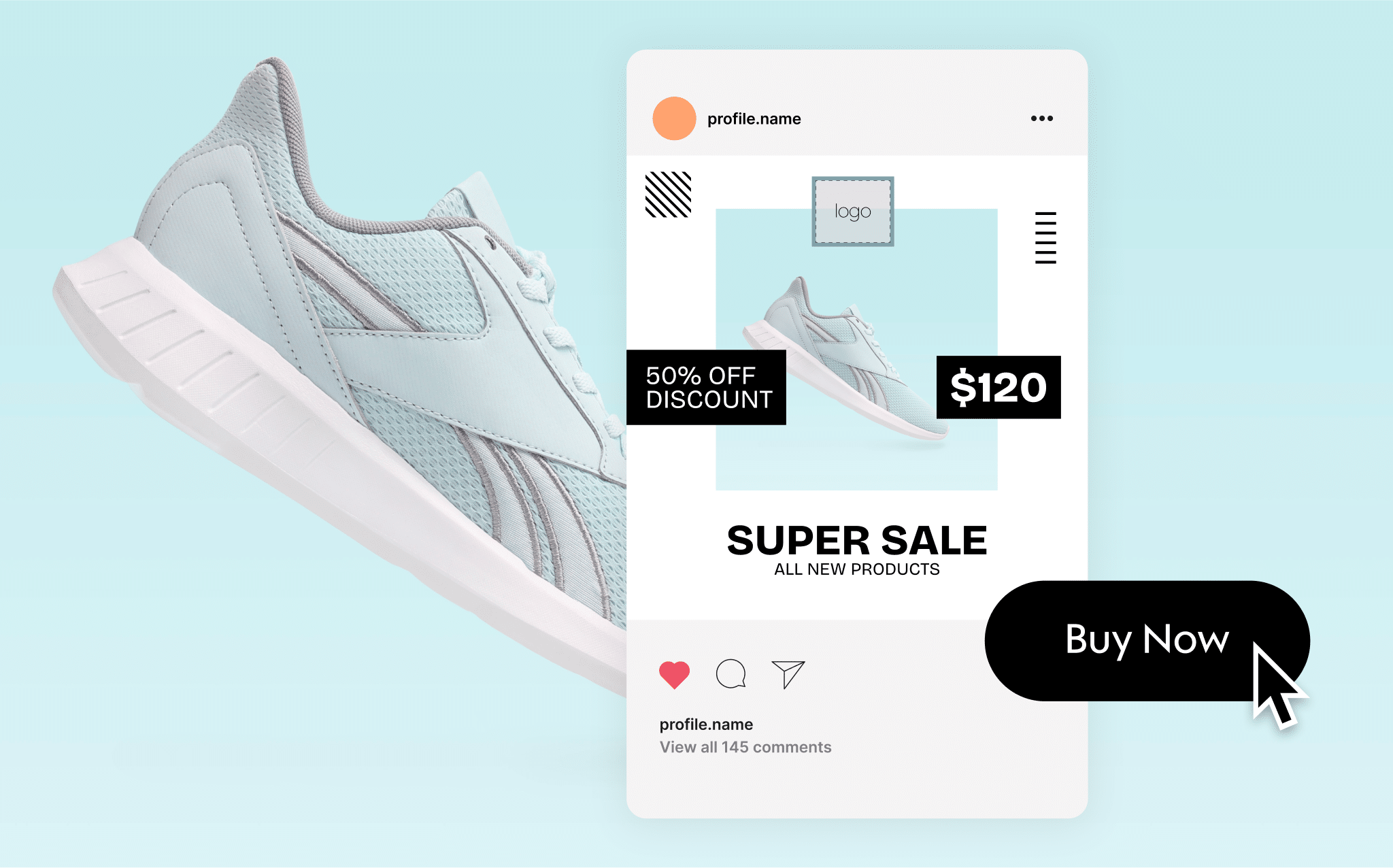
Shoppable Videos: The Future of E-Commerce & How Small Businesses Can Profit from Them

- Blog
- Uncategorized
- Shoppable Videos: The Future of E-Commerce & How Small Businesses Can Profit from Them
As digital platforms dominate the way we connect, video content has become the crown jewel of marketing strategies. With platforms like TikTok, Instagram, and YouTube leading the way, consumers are more engaged with video content than ever before. Videos captivate attention, tell compelling stories, and build connections that static images or text simply can’t achieve. But what if these videos could do more than engage? What if they could transform viewer interest into immediate sales?
Enter shoppable videos—an innovative tool that merges entertainment and e-commerce. Shoppable videos allow viewers to shop directly within the content, creating a seamless, engaging shopping experience. Imagine watching a short video of a baker using a stunning set of mixing bowls and being able to click directly on the bowls to purchase them—without ever leaving the video. This frictionless journey from discovery to checkout has revolutionized how consumers shop and how brands sell.
For small and medium-sized businesses working with limited budgets and needing impactful strategies, shoppable videos offer the perfect opportunity to harness the power of video content while driving measurable results.
What Are Shoppable Videos?
Shoppable videos are interactive video content that allows viewers to purchase products or services directly within the video player. By integrating clickable hotspots, product tags, or embedded links, these videos eliminate the need for viewers to navigate away from the content, creating a streamlined and immersive shopping experience.
Key features of shoppable videos include:
- Clickable Hotspots and Tags: Highlight products or services in the video with interactive tags that direct viewers to purchase pages.
- Integration with E-commerce Platforms and Social Media: Seamlessly link with platforms like Shopify, Instagram, and TikTok to enable quick transactions.
- Seamless Purchase Journey: Viewers can add items to their cart or buy instantly without leaving the video, reducing drop-off rates.
The rise of shoppable videos is no coincidence. A combination of shifts in consumer behavior and advancements in technology has made them a must-have marketing tool. For years, consumers have shown a growing preference for speed, interactivity, and ease in their shopping experiences. And with the COVID-19 pandemic leading to more people shopping from home, businesses needed to find engaging ways to showcase and sell their products online, making shoppable videos even more popular. Today, research has shown that 41% of viewers make purchases after watching shoppable videos, highlighting their potential to drive revenue.
Why Shoppable Videos Are Gaining Popularity
Shoppable videos have quickly become a favorite tool for businesses, combining the visual appeal of video content with the convenience of online shopping. Let’s take a look at some of the reasons why brands are investing more in this type of content.
Shortening the Sales Cycle
Shoppable videos are designed to streamline the customer journey, removing barriers that traditionally slow down the path to purchase. Unlike traditional content, where a viewer might need to navigate multiple steps to find and buy a product, shoppable videos enable immediate action. Viewers can click directly on items showcased in the video, add them to their cart, and complete the purchase—all without leaving the video player. This intuitive experience aligns perfectly with modern consumer preferences for speed and convenience.
The impact of this streamlined process is profound. By shortening the time between product discovery and purchase, brands see an increase in impulse buys and faster decision-making. Fresh Market, for instance, experienced a 113% boost in engagement and a 115% increase in session time after introducing shoppable videos. These results highlight how reducing friction in the shopping experience can translate into higher conversions, making shoppable videos a powerful tool for businesses looking to capture consumer interest while it’s at its peak.
Showcasing Product Value
Shoppable videos excel at demonstrating product features and benefits in ways that static images or written descriptions simply cannot. With a video, brands can highlight the quality, functionality, and versatility of a product in a dynamic and visually engaging format. Whether it’s a close-up of intricate details, a demonstration of the product in use, or a lifestyle scenario showing how the product fits into everyday life, shoppable videos provide an immersive experience that builds trust and credibility with the audience.
The ability to effectively showcase product value leads to measurable results. For example, Swarovksi achieved a 36% engagement rate and a 15% click-through rate with its shoppable videos. By using captivating visuals to highlight the craftsmanship and brilliance of its jewelry, the brand helped customers feel confident in their purchasing decisions. This deeper understanding of the product’s value not only drives sales but also strengthens brand loyalty, as customers feel informed and assured in their choices.
Enhancing Consumer Engagement
Engagement is the cornerstone of effective digital marketing, and shoppable videos deliver it in spades. By incorporating interactive features such as clickable tags, polls, and CTAs, these videos transform passive viewing into an active experience. Viewers are invited to explore products, answer questions, or take part in a brand story, creating a sense of involvement that traditional ads rarely achieve.
This heightened engagement has a ripple effect on brand perception and performance. For instance, Natori increased its conversion rates by 141% by leveraging shoppable video content. The brand’s use of interactive elements encouraged viewers to spend more time engaging with its products, leading to stronger connections and higher retention rates. This approach not only keeps viewers interested but also enhances their overall experience, making them more likely to return to the brand in the future.
Moreover, the interactive nature of shoppable videos provides valuable insights for businesses. By tracking which elements viewers interact with most, brands can refine their strategies to better meet customer needs and preferences. This two-way engagement creates a virtuous cycle of learning and improvement, helping brands foster deeper relationships with their audience.
Challenges of Creating Shoppable Videos
While shoppable videos are powerful, smaller businesses may face some challenges in adopting this innovative format. These include:
- Cost: Producing high-quality, interactive videos can be expensive, especially for small businesses with tight budgets. Costs include video production, integrating shoppable elements, and ensuring a polished presentation.
- Technical Complexity: Integrating clickable elements and ensuring seamless compatibility with e-commerce platforms often requires technical expertise. Businesses must also ensure their videos are responsive across devices and platforms. For small businesses without dedicated tech teams, this can be a significant hurdle.
- Content Strategy: Striking a balance between engaging storytelling and clear calls to action requires careful planning and creativity. For small businesses with limited resources, maintaining consistency across video campaigns can be difficult.
How PromoAI Makes Shoppable Videos Accessible for Small Businesses
These challenges may make shoppable videos seem out of reach for small businesses, but PromoAI simplifies the process, making this game-changing tool accessible and cost-effective. It does so by:
- Simplifying Video Production: PromoAI streamlines video creation, letting small businesses easily create engaging videos without prior production experience. The platform’s AI-powered tools generate professional, on-brand videos in minutes, saving time and eliminating the need for complex editing software.
- Reducing Costs: Traditional video production often requires expensive teams and equipment. PromoAI offers an affordable subscription model tailored for small business budgets. By cutting out the middlemen and automating key steps, businesses of any size can produce high-quality, interactive videos at a fraction of the cost, ensuring a strong ROI.
- Streamlined Publishing: PromoAI lets you schedule and publish your videos directly to social media platforms, where you can add shoppable features. This saves significant time and lets you connect with your audience where they shop, creating a frictionless experience.
For example, a small fitness studio can use PromoAI to produce a shoppable video featuring yoga mats and accessories. Viewers can purchase the products directly while exploring the studio’s class offerings, combining commerce with community engagement.
Use Cases for Shoppable Videos
Shoppable videos offer versatile applications for businesses across industries, providing creative ways to engage customers and drive sales. Here’s how a variety of small business types can use this powerful tool to their advantage.
Retailers and Boutiques
Shoppable videos are perfect for showcasing seasonal collections or new arrivals in an engaging, interactive format. Retailers can use these videos to highlight product details, styling tips, and usage scenarios, making it easier for customers to envision owning the items.
For example, a boutique specializing in sustainable fashion could create a shoppable video to launch its summer collection. The video might feature a stylist walking viewers through a capsule wardrobe, demonstrating how each piece can be mixed and matched for different occasions. Clickable hotspots on each outfit would allow customers to explore product details and add items directly to their cart.
Cafés and Restaurants
Restaurants can use shoppable videos to highlight their menu, promote limited-time offers, or generate excitement around new items. Imagine a video featuring a new signature drink or dish, where viewers can pre-order for pickup or purchase gift cards directly. These videos don’t just entice with visuals—they provide a convenient path to action. Or a café could promote a seasonal latte, complete with clickable links to order online, leading to increased orders and foot traffic.
Service-Based Businesses
Shoppable videos aren’t limited to physical products—they’re equally effective for selling services. Service providers like real estate agents, fitness trainers, or consultants can create interactive videos to promote consultations, packages, or specific offerings. For example, a real estate agent might use a video tour of a property with embedded links to schedule showings or consultations. These videos enhance trust, showcase expertise, and provide an effortless way for potential clients to connect.
Actionable Steps for Small Businesses to Get Started
Implementing shoppable videos may seem daunting at first, but with the right approach, small businesses can harness their power to drive engagement and sales. Here’s how to get started:
- Identify Key Products or Services: Focus on offerings that are visually engaging and benefit most from a demonstration. Whether it’s a trendy outfit, a new dish, or a professional service, prioritize items that solve customer pain points or create excitement.
- Choose Tools: Select user-friendly tools designed for small businesses, such as PromoAI, to simplify video production and interactivity. These platforms often include AI-powered editing features and seamless social media integrations, reducing the need for technical expertise or large budgets.
- Plan Your Storyline: Craft a concise and compelling narrative. Highlight how your product or service solves a problem or fulfills a desire. Use high-quality visuals and relatable scenarios to capture attention, keeping the video length between 30 seconds and two minutes to maintain engagement.
- Add Interactivity: Enhance your videos with clickable CTAs, tags, and shopping links that allow viewers to act instantly. Highlight key product details or services directly in the video to create a seamless path to purchase.
- Promote Across Channels: Maximize reach by sharing your videos on social media, embedding them on your website, and incorporating them into email marketing campaigns. Tailor the format to fit each platform—short reels for Instagram, full videos for YouTube, or email snippets with links to the full content.
Measuring Success
Shoppable videos can be a powerful tool for driving sales, but tracking the right metrics is essential to understand their impact and refine your strategy.
We recommend tracking these metrics:
- Conversion Rates: This metric measures the percentage of viewers who complete a purchase after watching your shoppable video. It directly indicates how effective your video is at driving sales and moving customers through the funnel.
- Click-Through Rates (CTR): This metric tracks how many viewers engage with the clickable elements, such as CTAs, product tags, or shopping links. A high CTR suggests your video is engaging and successfully encouraging further interaction.
- Average Order Value (AOV): This metric monitors the average value of purchases made through your shoppable videos. Higher AOVs can indicate that viewers are discovering additional products or being upsold through video content.
- Time Spent on Video: This metric evaluates how long viewers stay engaged with your video. Longer watch times suggest your content is resonating and holding interest, which often correlates with better sales performance.
To optimize your shoppable video metrics, it’s best to leverage analytics tools like Storyly, Hotjar, or Google Analytics to gain insights into viewer behavior and identify trends. Monitor key metric and adjust your content accordingly to improve engagement. It’s also wise to A/B test different formats. This means experimenting with various video lengths, styles, and CTAs to determine what works best for your audience. For example, test dynamic storytelling versus quick product showcases to identify which drives higher conversions.
Shoppable Videos: The Future of Small- and Medium-Sized Business Marketing
Shoppable videos have evolved into a game-changing tool for businesses of all sizes, bridging the gap between content and commerce. Once reserved for big brands, this interactive format is now accessible to small and medium-sized businesses, thanks to AI-driven tools like PromoAI. These videos allow small businesses to create engaging, cost-effective, and impactful content that boosts conversions, shortens the sales cycle, and fosters customer loyalty.
The future of digital marketing lies in blending compelling storytelling with seamless shopping experiences. Shoppable videos provide exactly that, enabling businesses to showcase their offerings dynamically and connect with audiences on a deeper level.
Ready to create shoppable videos that convert? Let PromoAI help you simplify every step of the video marketing process and take your business to the next level.
Meet PromoAI
Generate a month worth of video content for your business in just one click!
About the author
Daisy Rogozinsky
Daisy Rogozinsky loves to use the written word to educate, entertain, and tell stories. If she's not writing content, she's writing poetry, music, and screenplays.


